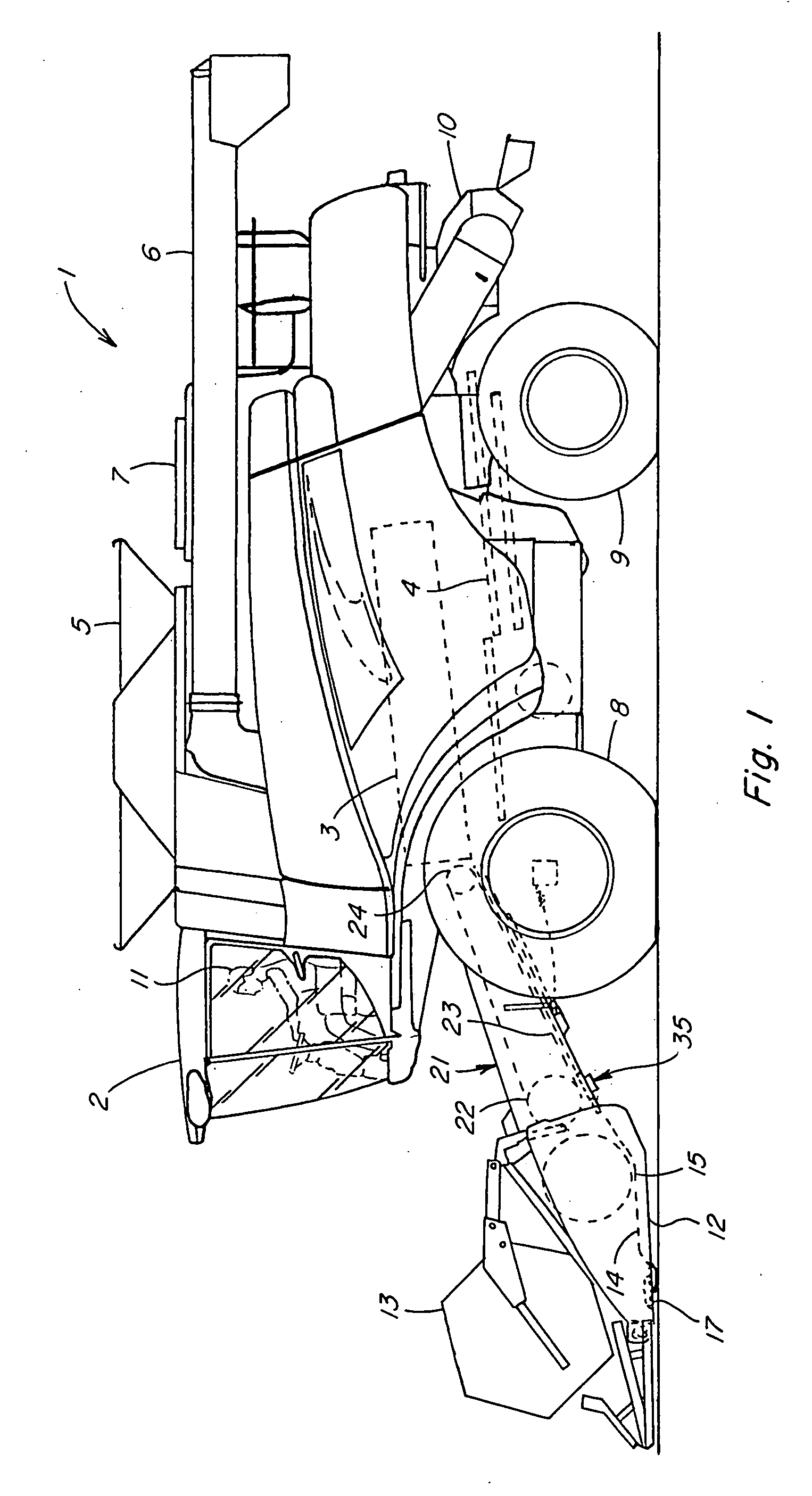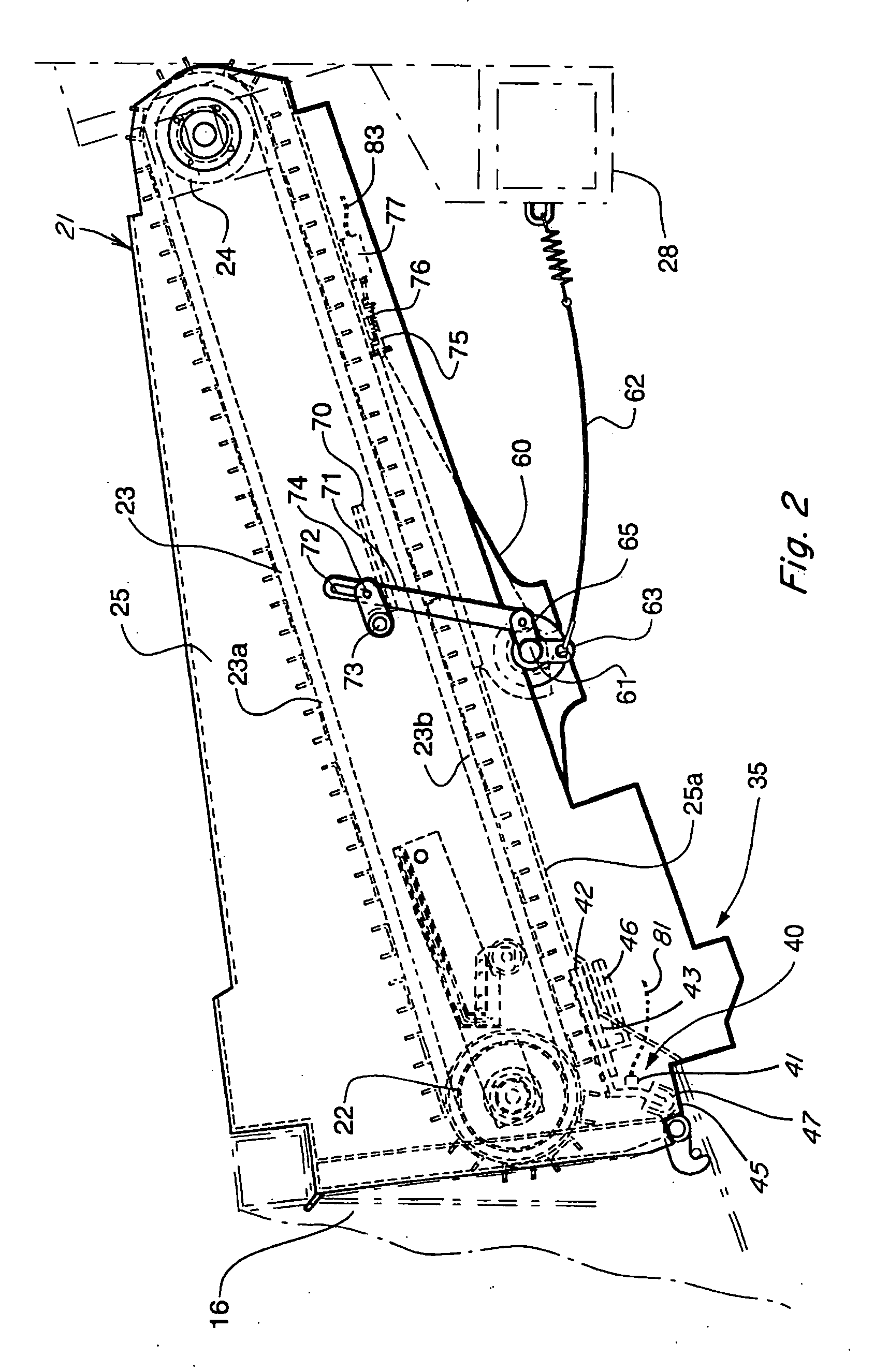Acoustic stone detection for a feederhouse on an agricultural combine
a technology of a combine and a feederhouse, applied in the field of acoustic stone detection, can solve the problems of inadvertent stone receiving of the header, long time for farming operations, and expensive damage to the threshing components, and achieve the effect of unique surface characteristics
- Summary
- Abstract
- Description
- Claims
- Application Information
AI Technical Summary
Benefits of technology
Problems solved by technology
Method used
Image
Examples
Embodiment Construction
[0045] Referring to the drawings, wherein like items are identified by like numerals, it is possible to observe the major elements and general operation of the present invention. Left and right references are used as a matter of convenience and are determined by standing at the rear of the combine and facing the forward end in the normal direction of travel. Likewise, forward and rearward are determined by normal direction of travel of the combine. Upward or downward orientations are relative to the ground or operating surface. Horizontal or vertical planes are also relative to ground.
[0046] As seen in FIG. 1, the invention is located on a typical combine 1 (i.e. twin rotor or single, axial flow rotor) having front wheels 8 (only one shown) and rear wheels 9 (only one shown) for providing movement over the ground. At the front of the combine is a header 12 having a cutting bar 17 for cutting a crop. As the combine 1 and header 12 are moved forward, the cutting bar 17 of header 12 c...
PUM
 Login to View More
Login to View More Abstract
Description
Claims
Application Information
 Login to View More
Login to View More - R&D
- Intellectual Property
- Life Sciences
- Materials
- Tech Scout
- Unparalleled Data Quality
- Higher Quality Content
- 60% Fewer Hallucinations
Browse by: Latest US Patents, China's latest patents, Technical Efficacy Thesaurus, Application Domain, Technology Topic, Popular Technical Reports.
© 2025 PatSnap. All rights reserved.Legal|Privacy policy|Modern Slavery Act Transparency Statement|Sitemap|About US| Contact US: help@patsnap.com



